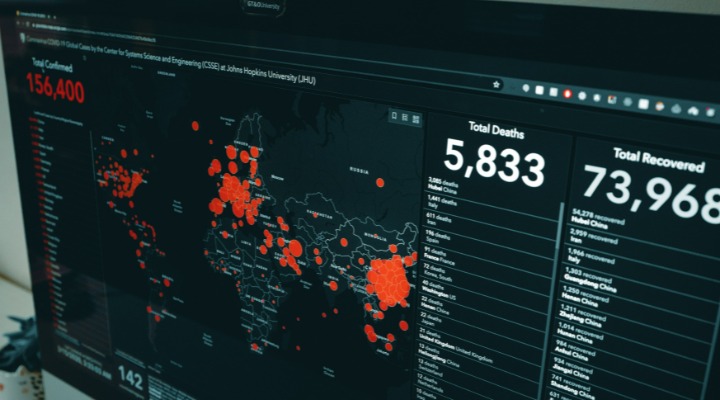There are some phrases which patients do not deserve to hear.
“Only if we knew more about the symptoms earlier.”
“We would have been in a better position had you approached us last month!”
“We could have avoided hospitalization if you had taken the right precautions.”
Nor should the doctors be made to say such things given the skill sets they possess. Delays in care are directly related to health risks, high costs, and unnecessary complications. However, what can we do to avoid such instances?
Where does the problem lie?
We have some of the best doctors and pharmaceutical brains in the world, and we also have world-class medical schools and quality care delivery institutions around the country. Yet, we aren’t anywhere close to being called the “best healthcare system in the world.” Reasons are plenty:
- Culture of “self-treatment” – Many patients tend to avoid visiting a doctor to save money.
- Lack of the culture of wellness – Our healthcare system is based on the goal of treating patients instead of ensuring their wellbeing.
- Not enough care providers – Against the WHO recommended ratio of 1:1000, India has 1 doctor for every 1456 people.
- Uneven distribution of care providers in urban and rural areas – According to another report, 75% of the healthcare infrastructure of India is concentrated in urban areas despite the fact that more than 65% of the population resides in rural regions.
- Unavailability of a connected care continuum – Our healthcare system is not digitized in the major part of the country. The patient information exists in digital or non-digital files which aren’t always accessible to each care stakeholder.
- Lack of enough resources – India spends less than 2% of its GDP on healthcare, one of the lowest in the world.
Doctors Deserve To Witness The Innovation

As a nation, we often talk about technology and engineering prowess. From ordering the cereal we eat in the morning to the AR-powered video games we play, technology is at the root of it. From the way we book our movie tickets to how we transfer money from one bank account to another, technology has made this world more convenient and exciting for everyone. However, healthcare has still stayed an exception.
Our banks know more about us than your family physicians – and they are in a better position to manage our preferences than our care providers. One simple reason – our bank piled up every piece of information about its clients and analyzed it to add value to it. On the contrary, our physicians never had the means to analyze anything they ever knew about us!
Role of Data Analytics In Improving Wellness

Early detection of symptoms and making patients aware of their susceptibility to certain health issues have a two-fold benefit of better care outcomes and reduced cost. However, to ensure the same, it is necessary that doctors remain connected with their patients in near or real-time, are empowered with trustworthy data, and supported with actionable insights.
This is where data comes into play. By aggregating, analyzing, and activating data coming from disparate sources, healthcare technology innovations can empower care providers with insights that matter the most right in the moment of care. Imagine your doctor has access to your medical history, your ongoing medication, your vitals, and even your food habits – and then they customize a care plan for you to address every facet of your lifestyle. Double this up with the fact that your doctor regularly recommends wellness checkups and sends you awareness literature around possible health issues. Sounds comprehensive, right?
Such highly sophisticated algorithms can also eliminate the need for manual administrative interventions during patient-doctor interaction time, and thus substantially increase doctors’ understanding of their patients. When implemented across the entire network, AI-enabled, data-driven insights can have a great impact on care and cost outcomes.
Strengthening Primary Care For Quality Healthcare

For any nation, primary care facilities represent the first touchpoint between the system and the people. It is where the at-risk population can be identified and triaged into buckets for the hospitals and even governments to act upon systematically. Once vulnerable groups are identified, we can dedicate ample resources to ensure that their health conditions don’t exacerbate unnecessarily. These timely interventions can not only result in avoiding health complications, but also ensure our already-burdened health system is not further burdened with avoidable emergency care needs.
A population-level comprehension of patient data serves multiple purposes simultaneously. Population health analytics, in fact, can solve different use-cases for different stakeholders too, some of them are listed below:
Hospitals
- Increased patient satisfaction and outcomes
- Reduced administrative burden on care teams
- Enhanced patient awareness
- Better resource management and timely care delivery
Rural facilities/ community centres
- Quality-focused patient triaging and triggering
- Low-cost treatment
- Early detection of symptoms
- Disburdened facilities
Patients
- Increased awareness
- Improved relationships with care teams
- Reduced expenditure on care needs
- Better care outcomes
Policymakers
- Evidence-based resource allocation
- Rigorous policy improvement cycles
- YoY population-level health trends monitoring mechanisms
- Timely public health emergency troubleshooting
The Road Ahead
The canvas of technology is untamed, and so should be our aspirations! We need to believe that India’s healthcare system can one day become one of the greatest in this world, but for that to happen, we would need to follow a quality-driven and data-backed approach that can take us closer to this collective objective! Undeniably, primary care will play a crucial role in this transition.


